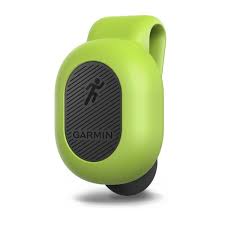Data can be a very useful tool when it comes to running, whether you’re looking to run faster, reduce injuries or just enjoy seeing some interesting stats. A Garmin running dynamics pod can help with these, and for around £45, it covers a lot of the data that far more expensive pods such as Stryd can generate.
Not all of the data will be directly actionable, but certain elements will improve indirectly as you work on technique. I’ll explain a bit below about what to look at, but if you go ahead and get one, you can likely find a coach to go through it with you.
More accurate stride length
Garmin watches do a pretty good job of stride length data, simply using the distance run divided by the number of steps it counts you taking. The pod doesn’t miss a beat where watches may miss the odd step. It won’t make much of a difference, but accuracy is always helpful.
V.O. and V.R.
Vertical Oscillation or V.O. is a measure of how high you rise when running from the compression when landing to the highest point in the gait cycle. You’ve no doubt seen someone seamlessly gliding along in a run, and equally come across runners who seem to run “up” as much as forward. By finding out how much you rise, we can look at the efficiency of your leg use. The typical range is 6-13cm.
Vertical Ratio or V.R. uses the V.O. data in conjunction with your stride length to determine a ratio (technically a percentage) which also shows efficiency. The lower the number, the less energy you’re using when running.
Ground Contact Time
This is simple, how many milliseconds is your foot on the ground for. The number should vary depending on the effort you’re applying, so your G.C.T. should be lower during a 5k than a half marathon for instance. In isolation this is likely to not be much use but comparing long term trends and the contact time of your various race paces can be helpful. Beware looking for this number to reduce without looking at technique overall. A lower contact time might sound great, but if it doesn’t decrease for the right reasons it can leave you running like a dressage horse, which won’t do your race times any good.
G.C.T. balance
Ever feel like one leg is working a lot harder than the other? The balance of ground contact time can tell you if that’s true. This compares the left to right balance and expresses it as a percentage each side. Whilst this will likely never be the case, you want them to be as close to 50% each as possible. If you’re running on track or on a looped course, ignore this as the constant turning to one direction will throw the data off. This metric can be acted upon with technique drills if one leg is lagging behind.
The data from a running dynamics pod can be very useful, but your application of work to change how you run is what will determine how useful it all is for your running as a whole.
Written by Kyle Brooks, Running Coach based in Norwich, Norfolk

